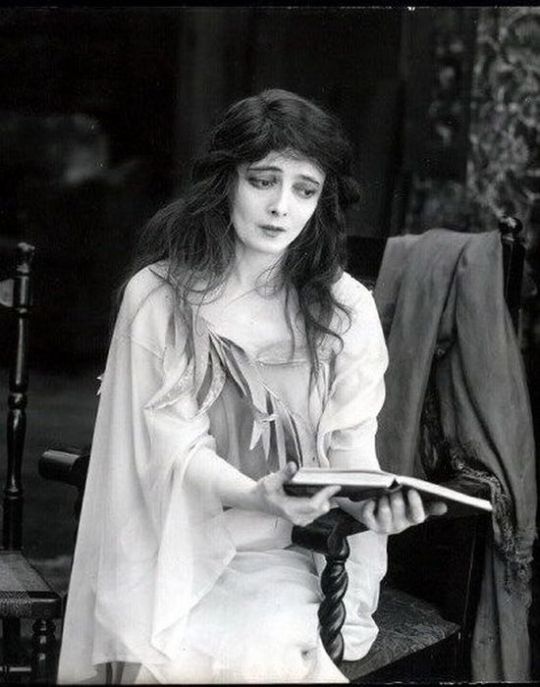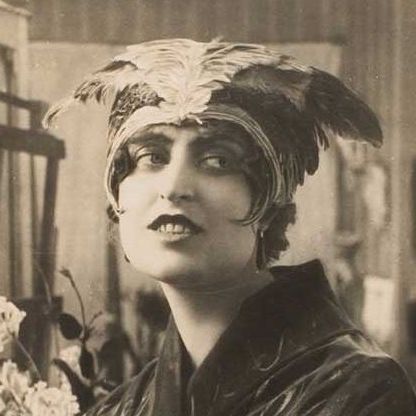#speculative theology
Text
there is no fictional narrative without the presence of God woven through it like a silver thread. in fact, They're far more interesting as a concept when they're allowed to govern the worlds of fiction, when They're channeled through a writer's hand, than when members of organised religions try to impose Their iron-fisted rule onto our chaotic and unpredictable reality.
i'm mostly an atheist, a luxury that fictional characters do not have at their disposal. especially not those from universes of fantasy, horror and the like, any narratives that interpolate myth and make use of magic (even magic that the characters call "science" – for all intents and purposes still magic). these narratives operate by rules ineffable to most fictional universe residents and no matter what they do, how they rage against their destinies, however positive and optimistic or dark and tragic those may be, they cannot break out.
#blog thesis#btw. yeah greek tragedy core i know i'm not original#but i think the author is God. that's probably also unoriginal. i wish i read every book ever written so i knew when i was accidentally#plagiarising an idea...#storytelling#the narrative#tragedy#heavenposting#speculative fiction#speculative theology#metafiction#literature#jamie.txt
7 notes
·
View notes
Text
Sēt isn't only an iconoclast, but an enemy of entropy, an opponent of everything inert and a revealer of mysteries; He threatens all what should remain secret with His insatiable, scandalous curiosity; He's the Intellect that breaks the surface of Nūn and makes emerges from it the complete noetic cosmos through His thunderous voice and luminous lightning bolt.
9 notes
·
View notes
Text
Chapter 1
[1:1] In the beginning when God created the heavens and the earth,
[1:2] the earth was a formless void and darkness covered the face of the deep, while a wind from God swept over the face of the waters.
[1:3] Then God said, "Let there be light"; and there was light.
[1:4] And God saw that the light was good; and God separated the light from the darkness.
[1:5] God called the light Day, and the darkness he called Night. And there was evening and there was morning, the first day.
[1:6] And God said, "Let there be a dome in the midst of the waters, and let it separate the waters from the waters."
[1:7] So God made the dome and separated the waters that were under the dome from the waters that were above the dome. And it was so.
[1:8] God called the dome Sky. And there was evening and there was morning, the second day.
[1:9] And God said, "Let the waters under the sky be gathered together into one place, and let the dry land appear." And it was so.
[1:10] God called the dry land Earth, and the waters that were gathered together he called Seas. And God saw that it was good.
[1:11] Then God said, "Let the earth put forth vegetation: plants yielding seed, and fruit trees of every kind on earth that bear fruit with the seed in it." And it was so.
[1:12] The earth brought forth vegetation: plants yielding seed of every kind, and trees of every kind bearing fruit with the seed in it. And God saw that it was good.
[1:13] And there was evening and there was morning, the third day.
[1:14] And God said, "Let there be lights in the dome of the sky to separate the day from the night; and let them be for signs and for seasons and for days and years,
[1:15] and let them be lights in the dome of the sky to give light upon the earth." And it was so.
[1:16] God made the two great lights - the greater light to rule the day and the lesser light to rule the night - and the stars.
[1:17] God set them in the dome of the sky to give light upon the earth,
[1:18] to rule over the day and over the night, and to separate the light from the darkness. And God saw that it was good.
[1:19] And there was evening and there was morning, the fourth day.
[1:20] And God said, "Let the waters bring forth swarms of living creatures, and let birds fly above the earth across the dome of the sky."
[1:21] So God created the great sea monsters and every living creature that moves, of every kind, with which the waters swarm, and every winged bird of every kind. And God saw that it was good.
[1:22] God blessed them, saying, "Be fruitful and multiply and fill the waters in the seas, and let birds multiply on the earth."
[1:23] And there was evening and there was morning, the fifth day.
[1:24] And God said, "Let the earth bring forth living creatures of every kind: cattle and creeping things and wild animals of the earth of every kind." And it was so.
[1:25] God made the wild animals of the earth of every kind, and the cattle of every kind, and everything that creeps upon the ground of every kind. And God saw that it was good.
[1:26] Then God said, "Let us make humankind in our image, according to our likeness; and let them have dominion over the fish of the sea, and over the birds of the air, and over the cattle, and over all the wild animals of the earth, and over every creeping thing that creeps upon the earth."
[1:27] So God created humankind in his image, in the image of God he created them; male and female he created them.
[1:28] God blessed them, and God said to them, "Be fruitful and multiply, and fill the earth and subdue it; and have dominion over the fish of the sea and over the birds of the air and over every living thing that moves upon the earth."
[1:29] God said, "See, I have given you every plant yielding seed that is upon the face of all the earth, and every tree with seed in its fruit; you shall have them for food.
[1:30] And to every beast of the earth, and to every bird of the air, and to everything that creeps on the earth, everything that has the breath of life, I have given every green plant for food." And it was so.
[1:31] God saw everything that he had made, and indeed, it was very good. And there was evening and there was morning, the sixth day.
2 notes
·
View notes
Text
I hate this book. But I bought it. So I'm going to read it. And when I'm done, I'm going to let the world know that Tumblr could write a better theology book than Kline could
0 notes
Text
Theology Question
As with all my polls, please reblog so more people can answer it.
(If anyone's unclear, special revelation in theology is when God explicitly appears, either through prophets or His Son, and says "I am your God and here's what I have to say". General revelation is the implicit revelation from God that everyone everywhere in all times has - conscience, the sense of Someone or Something behind nature, the sense of the supernatural, etc.)
The specific hypothetical I'm thinking of is - "is it possible that God revealed Himself to/chose prophets from among people during the Ice Age?"
1 note
·
View note
Note
Hello, I was just readying the silence and the storm, and had the funniest thought. In TIATD Trazyn brags about him having a statue and a mural made, and Orikan not having any. In your story, based on how Trazyn describes Orikan's divine form, I imagine Orikan got something better than a statue, his first worshipper.
A baby god's first worshipper.
This was too silly to just keep for myself, I hope it gave you a chuckle, too.
Look, did I intend to give Trazyn a divinity kink when I started this? No. But sometimes characters just tell you what they want and you gotta roll with it.
I actually wonder if Trazyn would have had worshippers on Serenade? Since he was in a church, although I don't know if the Imperial church literally worships saints or if they venerate them (as in modern Catholicism). What I've read seems to lean towards the former, as I can't recall a case of someone asking for intercession but who knows?
#the silence and the storm#answering asks#this definitely made me chuckle#so thank you op#not sure if you were after speculation about Imperial theology#but here we are#trazyn the infinite#orikan the diviner
28 notes
·
View notes
Text
Friendly reminder about my favorite saint, Friardus, sainted for:
Blaspheming when he fell out of a tree
Being immune to bees
Idk, probably miraculous healing post-mortem
#I'm considering making a speculative theology tag#Master I cannot work it is the Feast of Saint Friardus#hesitating because I tend to prefer tags that actually say what they are#and because I don't know how much use I would actually get out of it#it would of course mostly be related to Norse pantheism#railing against the pantheistic Standard Model#and speculating about the localization and high school clique theories#... None of that makes sense to about anyone right now because I don't have a Saint Friardus tag#note it's highly important that Friardus is both practical and obscure as a saint
2 notes
·
View notes
Note
So I’m curious about your post about fiction that changed you! Noragami is one of my favorite shows so I’m interested in what about it affected you? (hope it was a positive change lol!)
It was! Like the song Suffering Servant, I think Noragami was really instrumental in turning my thoughts away from endless rationalizations of God’s existence and toward the Cross. There’s a reason it’s very popular among Christian anime fans (though that reputation developed after I had watched it, and I had actually put off watching it because—not yet knowing much about modern Japanese culture—I was afraid it would be wrong to watch a show starring the Shinto gods).
I think it would be very difficult for any Christian to watch Yukine sin ruthlessly while Yato takes the physical blight for each misdeed—willing to suffer even unto death to cleanse Yukine of the evil that will otherwise condemn him (and seemingly purely out of a love Yukine has not earned)—and not be utterly bowled over by a wave of gospel parallels, no matter how dry your wells of faith seem to be.
And there’s also the sanctification-esque dynamic wherein Yato sees Yukine floating along, claims him, gives him a name, and then not only makes him a formidable weapon, but hones Yukine into a better weapon over time by nurturing a relationship with him. (Obviously, Yato is also a deeply flawed individual, so this is sometimes a two-way street, but the effect is still so striking.)
At 17, I needed to forget the intricacies of doctrine that had me tied in existential knots and look instead to the Cross where all my doubts and despair had been forgiven, and Noragami was like a spoon stirring my brains around to be primely positioned for that eventual leap of faith.


#duality of Yato lmao#it’s been speculated that Adachitoka know a thing or two about Christian theology because the parallels are that blatant so#this is not to say that doctrine is bad — far be it from me!#but I had lost the forest for the trees if that makes sense#mobile#x#Christianity#Noragami#analysis#and and and! in the manga Yukine gets all these little arcs where he is alternately discipled by and discipler of other Shinki#perhaps a reread is due this year
26 notes
·
View notes
Text
Crazy how me a hardcore atheist is seriously considering reading the BibleTM
#last time this happened to me it was bc of Dostoevsky#no like but fr#I mean look at all those Christian theology go speculation posts#NOT JN A RELIGIOUS WAY THO
2 notes
·
View notes
Text
Ophanim: Symbolic Representation of Power and Glory Explored Through Modern Science and Technology
Preface
Ophanim are described as majestic beings that support and accompany the throne of God in the book of Ezekiel, characterized as wheels within wheels rotating in all directions. They are a symbolic representation of God’s power and authority. Biblically they’re a symbolic representation of God’s power and glory. They are not to be taken literally, despite how easy it is in modern society…
View On WordPress
#advance technology#ancient symbolism#artificial intelligence#atomic structure#extraterrestial concepts#futuristic engineering#ophanim#quantum computing#quantum entanglement#quantum mechanics#Science Fiction#speculative science#technological innovation#theology and science
0 notes
Text
I have a lot of Final Fantasy (XVI mostly) thoughts but I can’t untangle them right now
so I guess can we just appreciate Soken transforming the countermelody of the prelude into epic fight music from the state of play thing
#i don't want to dig into it or speculate too much before the game comes out but if Clive's arc is what I think it is#or what I have intuited from the facial tattoo/scar#hoo boy hoo wee oh no (positive)#broken shell of a man comes back for round 2 roaring rampage of revenge this hole you put me in wasn't deep enough#you're running out of places to hide from me etcetcetc#ugh I don't want to speculate too much because I might be wrong and if I'm right it's almost Spoilers#but if I'm right we're treading new ground or at least ground that hasn't been tread by a series protagonist before#it's like.... Auron as the protagonist#but if you do that you're effectively shifting into a different genre#FF fans are all getting older lol#I've had a lot of thoughts about the series as a whole recently that I can't push into logical sentences#even beyond The Theology of Endwalker which is something very large yet it is something I could put into sentences if I put my mind to it.#then there's the Final Fantasy And Berserk post which I will make after I actually play through the DRK questline
0 notes
Text
Abigail Pent literally brought her husband, and look where that got her!
Oh, I can't be normal about this...
Ianthe is saying all of the quiet parts out loud about cavaliership in the Nine Houses:
She says "the cavalier’s job is to die for the necromancer" (Palamedes tries to gloss this to "protect the necromancer", but concedes that "if this entails their own death, then they're expected to accept that"). She talks about Naberius as a commodity, procured at birth, raised for a purpose, modifiable and disposable at will.
She wants to make it clear that she was terribly clever and has no regrets. Which is obviously why she's been thinking about two people she deems "dull and stupid" to the extent that they're her main touchpoint for explaining her position and that she name checks both of them, separately, during her responses... (poor Magnus).
Because the Fifth represent the opposite of how things turned out for the Third: an incidental cavaliership to a relationship of two equals who chose each other (against social currents, quite possibly on several counts). Ianthe made a choice at Canaan House. And Abigail made choices eleven and five years before that. And Ianthe has been thinking about those choices.
So Abigail Pent brought her husband on a research jolly to the First instead of bringing a slave to the killing fields (to paraphrase Harrow). And where did that get her?
Well, The Unwanted Guest rather confirms Abigail's heretical speculations about the River: it is not the end, but a purgatorial passing point through which one can travel lightly to the further shore, or sink down to the horrors at the bottom. Abigail may not have gained ultimate power and posters of her face, but she did end HTN going off to cross the River to what, in the implied cosmology of TLT, sounds rather like heaven.
And as for Ianthe? Jod's "indelible sin" may not be the most reliable account of Lyctoral River theology, but Lyctors do not seem to travel lightly in the River...and the Stoma did try to grab Ianthe back in HTN. The newly created Paul offers Ianthe - and Naberius - a second chance and she rejects it.
And now the Death of God has been released, Ianthe has bet on God, God is having a mid-dismyriad crisis, and the girl Abigail Pent risked a second and total death to help knows the truth and is off to harrow hell.
Ianthe Naberius used her cavalier for the rotten true purpose of cavaliers, and look where that got her.
#the locked tomb#tlt#abigail pent#magnus quinn#john gaius#harrowhark nonagesimus#ianthe tridentarius#ianthe naberius#palamedes sextus#the unwanted guest spoilers#the unwanted guest#Yes I am making everything about Abigail Pent
875 notes
·
View notes
Text


Propaganda
Marie Doro (Lost and Won)—I had never heard of this woman before the prelims a couple of weeks ago, but oh my GOD I have not been able to stop thinking about her since. Look at her!! She was often typecast as delicate, fragile types on stage and screen, but in real life she was "intelligent, an expert on Shakespeare and Elizabethan poetry, and possessed a penetrating humor and a sometimes acid wit"(!!!!) and known for bringing vibrancy and intelligence to all of her roles. Unfortunately most of her films have been lost, but she was considered a highly sought-after lead actress through the '20s, at which point she retired from acting. In her later years, she went back to school, taking university courses in theology, physics, metaphysics, and philosophy. She was also reportedly close friends with Maude Adams and Mercedes de Acosta, both known for their lesbian relationships, which has led some (me) (but also others) to speculate that she may have been lesbian or bi herself. She has a star on the Hollywood Walk of Fame! She was Charlie Chaplin's first love! She was so beautiful??? I want her to recite poetry for me while we picnic in the park.
Pina Menichelli (The Fire, Padrone delle Ferriere)—ITALIAN SILENT MOVIE STAR!!! SHES HOT!!!
This is round 2 of the tournament. All other polls in this bracket can be found here. Please reblog with further support of your beloved hot sexy vintage woman. (remember that our poll era starts in 1910, so please don't use propaganda from before that date.)
[additional propaganda submitted under the cut.]
Marie Doro:

Unfortunately nearly all of Marie Doro’s movies are lost, and I don’t know a lot about her, but as soon as I came across Marie for the first time, I fell in love with her. The early Edwardian era is my favourite decade for fashion, and Marie wears it all so well! In every photo she looks like an angel made out of porcelain, too perfect to be real. She was Charlie Chaplin’s first love, and he remained in love with her for years after their first encounter, and let’s be honest, who can blame him? He said about her in his biography:
‘She was so devastatingly beautiful that I resented her. I resented her delicate, pouting lips, her regular white teeth, her adorable chin, her raven hair and dark brown eyes. But, oh God, she was beautiful! It was love at first sight. At the theatre I would time the moment that she left her dressing room so as to meet her on the stairs and gulp 'good-evening.' When I met Marie Doro again, it was like the second act of a romantic play. After we were introduced I said: 'But we've met before. You broke my heart. I was silently in love with you.' Marie, looking as beautiful as ever, said: “How thrilling”.


Doro retired from filmmaking in the 1920s and became very reclusive after that, so unfortunately there’s hardly any footage of her to watch. I feel sad that more people don’t know who Marie Doro is, because she’s very important to me.
Linked gifset to see Marie in action


Pina Menicelli:




177 notes
·
View notes
Text
okay random 4am rant time, don't take it too seriously, but: people need to recognize there's a difference between "bad worldbuilding" and "worldbuilding styles you personally don't like."
bad worldbuilding is, for example: internally inconsistent, bigoted, or something else that messes up the plot or characterization of the story itself. sloppy. careless.
things that are *not* bad worldbuilding:
minimalism.
i've been thinking about this in the first place because i saw a post about the Murderbot Diaries a while back (don't know who made it, don't care; this ain't personal) saying the worldbuilding in those books is bad and lazy. to me, as an avid sci-fi reader and writer, that is clearly not true. but i understood why they thought this. the series uses extremely minimalist worldbuilding which intentionally withholds a lot of detail, in a way that is consistent with the (nonhuman, robot, depressed robot) first-person POV. this could also be a feature of the author's writing style in general—i haven't read her other works—but i wouldn't bet too much on it.
the signature of intentional minimalism is that there *are* details about the speculative setting—they're just doled out very thoughtfully and sparingly. the intent is to leave you a little hungry for more. it's to make you think very carefully about the details you do have. this is best suited to stories that already have elements of psychological and/or mystery plot types. the worldbuilding you do see should still be believable, internally consistent, and have interesting implications if you think about it a bit. but you are for sure going to have to think harder to get it.
if you're not in the mood, i will concede, a minimalist style definitely comes off as a bit dry. if you are in the mood, it's relaxing.
whimsy.
this is a big one for sci-fi fans in particular. see: the constant debate about whether any particular story is "hard" or "soft" sci-fi, and whether soft sci-fi is bad, etc etc. but worldbuilding doesn't have to be realistic to be good. you're allowed to have Jedi and humanoid aliens and time travel in your sci-fi. you're allowed to have historical anachronisms and astrology and po-ta-toes in your fantasy. whether or not they're silly isn't the deciding factor on how "good" these worldbuilding elements really are.
the key thing is tonal consistency. you've got a serious high-fantasy setting with its own strict, un-Earth-like theology and magic system, and you throw Santa Claus in there? yeah, that's not gonna land well. but C.S. Lewis can get away with that in Narnia just fine. why? because the Chronicles of Narnia are whimsical children's stories with a strong Christian/Western mythological influence already, and their central conceit is a crossover between the mundane world and the magical world. of course Santa can cross over too. it's whimsical, but it's not actually random. (and if you ventured into straight-up comedy, you could get away with random too. as long as it's funny.)
the unreliable narrator.
i don't have a good example for this off the top of my head (maybe Murderbot again? idk, i'm sleepy, fill in your own) but i'll tell you how to recognize when this is done well.
by definition, an unreliable narrator has some key misconceptions about their own world. so how do you tell what's going on as a reader? how do you know the writer isn't equally confused?
you connect the dots. solve the puzzle. in practice this is similar to reading a minimalist setting—but instead of just sparse clues, you also have a boatload of red herrings. you can catch some of these misleading details by comparing them to your real-world knowledge and saying "wait, this doesn't add up." other times, the false clues intentionally trick you by subverting those real world expectations.
the trick is in the consequences. regardless of what the narrator says, their actions should still have logical consequences. there should be things going on that the POV character doesn't know about. the character will be forced to learn and adapt their narrative because of these shifting circumstances. you can catch them in a lie. the inconsistencies themselves tell a story.
...
i'm gonna stop myself there because this post is long and i oughtta be sleeping. just. this is a distinction worth making. is it really bad worldbuilding, or is it simply not the genre you're craving today? learn the difference for your own sake. you'll have an easier time realizing if a story is something you'll find enjoyable to read, regardless of its actual quality.
#long post#writing#worldbuilding#media literacy#media analysis#the murderbot diaries#the chronicles of narnia#Christianity mention#rant#sleep deprived
241 notes
·
View notes
Note
Is it appropriate for non-jewish authors/designers to take inspiration from jewish mythology and writing? I’ve seen a lot of media that does that especially in fantasy.
That's a loaded question, and while I certainly don't Speak For All Jews Everywhere - I am Not The Jewrax, I basically hold that it'd be fine in theory but in practice, it's almost always problematic because few gentiles bother to engage with Jewish perspectives on what they're using.
I'm not 112% sure on what you mean by mythology and writing, nor am I 112% sure what you mean by inspiration, but I'm going to make some educated guesses and invite both you to DM me or ask again and other Jews to float other possibilities.
I'm imagining you mean something to the impact of the use of Jewish folklore, theology, and stories in non-Jewish media, like art and literature, so I'm answering in that context. Specifically, I feel like you might be asking about angels and demons, Lillith, and golems, although that is very speculative and just because Those Are The Things Gentiles REALLY Want To Use.
The TL;DR is that I think while in theory, it's fine for gentiles to incorporate elements of Jewishness into their story, in practice they usually screw it up pretty badly if not veering into antisemitic trope-age altogether. There are a few factors that make this the case.
On the one hand, I want to see more representation of Jewish stuff, and not just the same three stereotypes ad nauseam. I legitimately do want more Jewish elements in stories, and I recognize the quantity I want would heavily benefit from, if not outright require, some contribution from the 99.8% of people globally who are not Jewish.
With that said, I think that gentiles tend to fuck up Jewish representations, both from a folklore perspective and a Jews Are People That Exist perspective. It's not some fatal flaw to view other cultures through your own lenses - it's only human, but it is challenging to address and something to be aware of. I see Christianity, Islam, and other religions (and atheism, for that matter) through the view of a Jew who was raised in and lives in a Christian-dominated society. Gentile writers see Judaism through the lenses of their own backgrounds and the backgrounds of their society.
For reasons that merit their own post, gentiles tend to forget that Jewishness exists independent of and predating many of their own lenses. For many of the same reasons, many gentiles have no interest in actually consulting Jews or Jewish sources on Jew things - we aren't regarded as minority enough or different enough or whatever to merit research, even among many gentile creators who normally research cultures they are not part of.
Without getting into it, a lot of people also A) really can't handle the idea that Some Things Are Just For Jews (like Kabbalah) or accept closed and semi-closed say what they mean on the tin and B) have (at the very least) implicitly supersessionist attitudes in their approach to Judaism - applying other religious and cultural contexts backwards even if they're directly at odds with the original Jewish ones. They learned about Jew Stuff in their Christian, Wiccan, Muslim, Unitarian Universalist, Atheist, etc. spaces, and how those spaces approached Jew Stuff (and the attitudes inherited from those spaces) are prioritized over what the Jews think of their own Stuff.
This often results in Jewish "representation" being filtered through the eyes of the dominant culture group (i.e. Christian), even if that's not the intent. This happens a lot with depictions or appropriations of Kabbalah, Lillith, and the Golem - specific cultural and theological biases are superimposed to the detriment of original context and meaning.
If you want to represent or take inspiration from a group, you need to understand that group. It doesn't mean you have to know EVERYTHING (no one does) but it means engaging with and researching the community beyond this One Cool Thing You Liked. The degree to which you do this depends on what you're using, but you want to be able to use stuff without stripping it of its original context.
Writing, mythology, and folklore are broad categories. If you want to use the zayde from Something From Nothing or make Sammy Spider real, that's way less loaded than taking traditional folklore and going Mine Mine Mine a la the birds in Finding Nemo. Good questions to ask when determining if you want to use a thing: is it explicitly closed or semi-closed? Has it been used to cause violence against its community of origin? Is it and its uses considered sacred?
Specific topics that you just shouldn't use because they are closed and/or have been used against Jews to cause us great pain: Lillith, Kabbalah, Golems, anything that implies or uses the blood libel, any kind of Jews-and-horns thing, or anything leaning into antisemitic conspiracy theories. I'd also tread very lightly and get sensitive readers on anything to do with angels and demons, circumcision, and kosher.
[above list is def non-exhaustive, other Jews please add stuff]
Also stay away from any "this is the SECRET meaning of this Jewish Thing And The Jews Are Wrong And This Proves My Religion/Conspiracy Theory/Worldview." Even if it does not promote a specific worldview, there's some major ick in saying "no this is what your holiday/beliefs actually mean/imply." Don't Da Vinci Code us, basically.
If you are wanting to write or make something with Jewish elements, consult Jews on the specifics! Seriously, most of us are SO happy to help you workshop.
Again, I do not speak for all Jews, but this is my personal take, and the kind of stuff I've heard a lot of other Jews opine as well.
#jumblr#long posts#jews#I feel like I'm being asked about Lillith or the Golem or MAYBE Dybbuks#answered asks
404 notes
·
View notes
Text

Kabbalah - Tree of Life
Kabbalah (Hebrew קַבָּלָה “reception”, Standard Hebrew Qabbala, Tiberian Hebrew Qabbālāh; also written variously as Cabala, Cabalah, Cabbala, Cabbalah, Kabala, Kabalah, Kabbala, Qabala, Qabalah, Kaballah) is an interpretation (exegesis, hermeneutic) key, “soul” of the Torah (Hebrew Bible), or the religious mystical system of Judaism claiming an insight into divine nature.
Kabbalah became a reference to doctrines of esoteric knowledge concerning God, God’s creation of the universe and the laws of nature, and the path by which adult religious Jews can learn these secrets. Originally, however, the term Kabbalah was used in Talmudic texts, among the Geonim, and by early Rishonim as a reference to the full body of publicly available Jewish teaching. In this sense Kabbalah was used in referring to all of known Oral Law.
Kabbalah, according to the more recent use of the word, stresses the reasons and understanding of the commandments in the Torah, and the cause of events described in the Torah. Kabbalah includes the understanding of the spiritual spheres of creation, and the ways by which God administers the existence of the universe.
According to Jewish tradition dating from the 13th century, this knowledge has come down as a revelation to elect saints from a remote past, and preserved only by a privileged few. It is considered part of the Jewish Oral Law by the majority of religious Jews in modern times, although this was not agreed upon by many medieval Talmudic scholars, as well as a minority of current Orthodox rabbis.
Origin of Jewish Mysticism
According to adherents of Kabbalah, the origin of Kabbalah begins with the Tanakh (the Hebrew Bible). According to Midrash, God created the universe with “Ten utterances” or “Ten qualities.” When read by later generations of Kabbalists, the Torah’s description of the creation in the Book of Genesis reveals mysteries about the godhead itself, the true nature of Adam and Eve, the Garden of Eden, the Tree of Knowledge of Good and Evil and the Tree of Life, as well as the interaction of these supernal entities with the Serpent which leads to disaster when they eat the forbidden fruit, as recorded in Genesis 2.
The Bible provides ample additional material for mythic and mystical speculation. The prophet Ezekiel’s visions in particular attracted much speculation, as did Isaiah’s Temple vision (Chapter 6). Jacob’s vision of the ladder to heaven is another text providing an example of a mystical experience. Moses’ experience with the Burning bush and his encounters with God on Mount Sinai, are all evidence of mystical events in the Tanakh, and form the origin of Jewish mystical beliefs.
Jewish mystical traditions always appeal to an argument of authority based on antiquity. As a result, virtually all works claim or are ascribed ancient authorship. For example, Sefer Raziel HaMalach, an astro-magical text partly based on a magical manual of late antiquity, Sefer ha-Razim, was, according to the kabbalists, transmitted to Adam (after being evicted) by the angel Raziel. Another famous work, the Sefer Yetzirah, supposedly dates back to the patriarch Abraham. According to Apocalyptic literature, esoteric knowledge, such as magic, divination, and astrology, was transmitted to humans in the mythic past by the two angels, Aza and Azaz’el (in other places, Azaz’el and Uzaz’el) who ‘fell’ from heaven (see Genesis 6:4).
This appeal to antiquity has also shaped modern theories of influence in reconstructing the history of Jewish mysticism. The oldest versions of the Jewish mysticism have been theorized to extend from Assyrian theology and mysticism. Dr. Simo Parpola, a researcher at the University of Helsinki, has made some suggestive findings on the matter, particularly concerning an analysis of the Sefirot. Noting the general similarity between the Sefirot of the Kabbalah and the Tree of Life of Assyria, he reconstructed what an Assyrian antecendent to the Sepiroth would look like.[2] He matched the characteristics of En Sof on the nodes of the Sepiroth to the gods of Assyria, and was able to even find textual parallels between these Assyrian gods and the characteristics of god. The Assyrians assigned specific numbers to their gods, similar to how the Sepiroth assigns numbers to its nodes. However, the Assyrians use a sexagesimal number system, whereas the Sepiroth is decimal. With the Assyrian numbers, additional layers of meaning and mystical relevance appear in the Sepiroth. Normally, floating above the Assyrian Tree of Life was the god Assur, this corresponds to En Sof, which is also, via a series of transformations, derived from the Assyrian word Assur.
Furthermore, Dr. Paropla re-interpreted various Assyrian tablets in the terms of this primitive Sefirot, such as the Epic Of Gilgamesh, and in doing so was able to reveal that the scribes themselves had been writing philosophical-mystical tracts, rather than mere adventure stories. Traces of this Assyrian mode of thought and philosophy eventually makes reappearances in Greek Philosophy and the Kabbalah.
Skeptics would point out that the doctrine of the Sefirot only saw serious development starting in the 12th Century CE with the publication of the Bahir. To argue that the concept of the sefirot existed in an occult and undocumented form within Judaism from the time of the Assyrian empire (which fell from cultural hegemony in the 7th Cent. BCE) until it “surfaced” 17-18 centuries later strikes some scholars as far-fetched. A plausible alternative, based in the research of Gershom Scholem, the pre-eminent scholar of Kabbalah in the 20th Century, is to see the sefirot as a theosophical doctrine that emerges out of Jewish late antiquity word-mythology (as exemplified in Sefer Yetzirah) and the angelic-palace mysticism found in Hekalot literature being fused to the Neo-Platonic notion of creation through progressive divine emanations.
46 notes
·
View notes